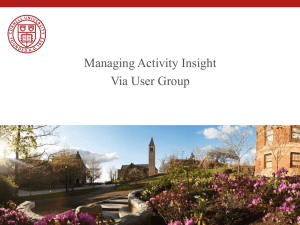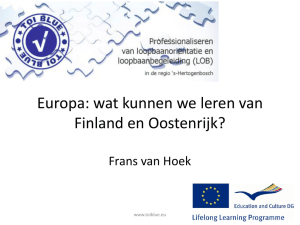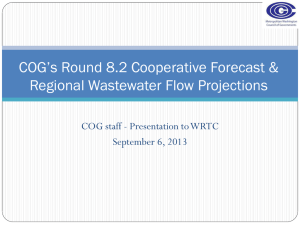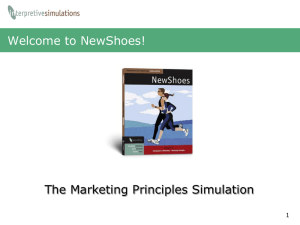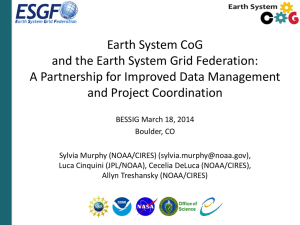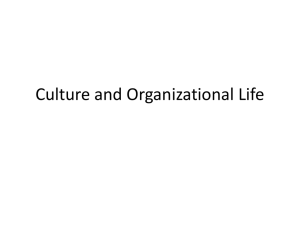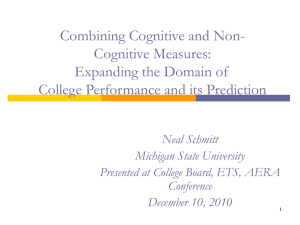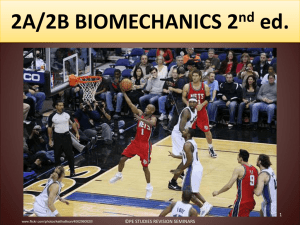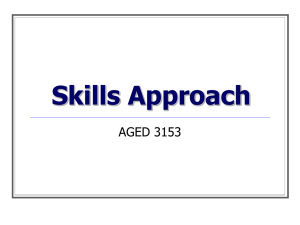Towards a Semantic W..
advertisement
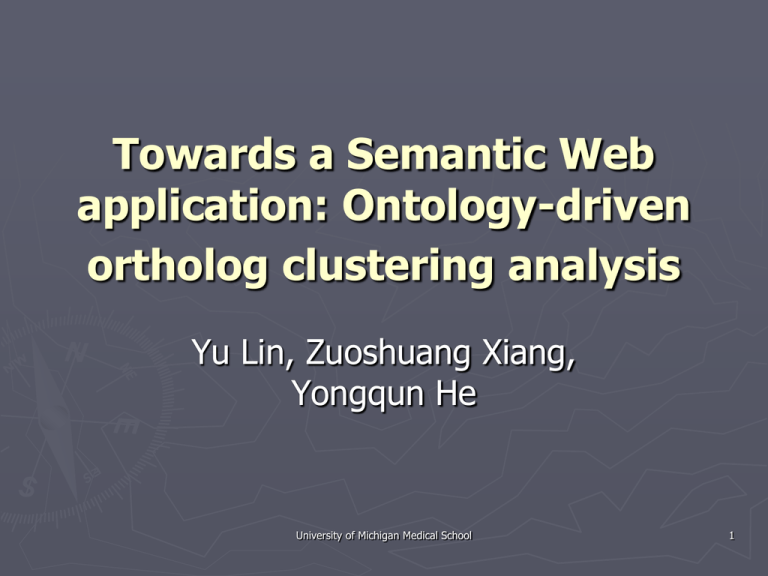
Towards a Semantic Web application: Ontology-driven ortholog clustering analysis Yu Lin, Zuoshuang Xiang, Yongqun He University of Michigan Medical School 1 Outline Background of COG (Clusters of Orthologous Groups ) database ► COG-based gene set enrichment analysis ► COG Analysis Ontology (CAO) ► OntoCOG, the semantic web application for COG enrichment analysis ► University of Michigan Medical School 2 Ortholog & COG database ► ortholog : Orthologs are genes in different species that have evolved from a common ancestral gene by speciation. Orthologs usually share the same functions in the course of evolution. ► ► COG database: 1) collections of orthologs 2) clusters orthologs to functional groups. Entry in COG has COG ID, or may have a functional category assignment. University of Michigan Medical School 3 COG vs. GO ► ► Same: Classified categories with gene product assigned, provide gene function annotation and classification. Different: Categories Species: GO: model animals; COG: 66 genomes. (COG covers more bacteria.) Only Schizosaccharomyces pombe (fission yeast), Saccharomyces cerevisiae (baker's yeast) and E. coli, have both COG and GO annotations. In Brucella, only one gene BMEI0467 in B. melitensis has been annotated both in GO and COG. GO:0042803 : protein homodimerization activity COG0408: Coproporphyrinogen III oxidase (Coenzyme transport and metabolism H) COG enrichment analysis Fisher’s Exact Test Contingency table Given list Not given Total list catA q m-q M Not catA k-q t-m-(k-q) t-m total K t-k T Given a list of k COG annotated proteins with a total of t proteins, for a given COG category A, there are q proteins within k and m proteins within t associated with it. University of Michigan Medical School COG enrichment analysis is to find out the statistical significance of the distribution of the data, particularly, the p-value to test whether COG category catA annotated protein q is enriched (unevenly distributed) among the given protein list t. 5 A lot of GO enrichment analysis services are available, but not the COG enrichment analysis service University of Michigan Medical School 6 Design of OntoCOG OntoCOG : a Semantic Web service application for COG enrichment analysis. Input data: a list of protein defined by user for COG enrichment analysis User layer OUTPUT: RDF data plain txt file Input data RDF data User defined protein list, gene list ... Application layer CAO (COG Analysis Ontology) supported data transformation Output data: proteins grouped by COG category with a p-value in OWL format. SPARQL endpoint COG enrichment analysis OWL reasoning Server Database layer backend RDMS RDF repository University of Michigan Medical School 7 COG Analysis Ontology (CAO) ► Scope 1) ontology-based software/service design; 2) supporting data integration and exchange in OWL format. ► Domain statistical analysis protein’s COG annotation University of Michigan Medical School 8 Design of CAO Fisher’s exact test analysis Fisher's exact test COG category clustered protein, user defined denoted_by COG Functional Category has_part COG enrichment data transformation using Fisher's exact test has_specified_input has_specified_output COG enrichment Fisher's test p-value user defined protein list clustered by COG category is_a is_a user defined protein list clustered by COG category E is_about has_member is_a Amino acid transport and metabolism denoted_by is_member_of COG category E clustered protein group, user defined has_size sample size Minimum info of output data has_specified_output COG mapping data transformation user defined COG annotated protein list is_specific_input_of is_a user defined data set for COG enrichment analysis COG category E clustered protein, user defined is about has_specified_input background data set clustered by COG category data transformation is_a datatype properties objective properties class term dataProtperty term SPAN:process is_a user defined gene list independent continuant generically dependent continuant CAO includes models for major components of the OntoCOG application: input data transformation, Fisher’s exact test analysis, and minimum information of output data. Terms in yellow, light purple, and green boxes denote processes, generically dependent continuants, and independent continuants, respectively. COG Analysis Ontology (CAO) : Core Terms University of Michigan Medical School 10 Information captured by CAO ► The given list ► The proteins grouped by COG categories ► The size of each category in the given list * ► The p-value of each category in the given list * It captures more information than traditional COG enrichment analysis (non-SW technology supported) The traditional output of COG enrichment analysis. Format: Category: p-value; size; (* denotes p-value < 0.05 significant) New relations in CAO ► denoted_by describes a relation of an independent entity and a data item an independent entity “denoted_by” a data item Not a reverse relation of “denotes” ► is_member_of has_member Reverse relations Describes relation of object and object aggregate University of Michigan Medical School 12 Axioms in CAO ► COG category clustered protein, user defined ≡ user defined protein and (denoted_by some COG Functional category) ► COG category E clustered protein, user defined ≡ COG category protein and (denoted_by min 1 COG Amino acid transport and metabolism) ► COG category E clustered protein group, user defined ≡ protein group and (has_member only COG category E protein) University of Michigan Medical School 13 Validation of CAO University of Michigan Medical School 14 Summaries on CAO ► An ontology to represent COG enrichment analysis ► An ontology to represent the COG enrichment analysis service : OntoCOG ► It is a use case of IAO (Information Artifact Ontology) and OBI (Ontology for Biomedical Investigation) ► It supports OntoCOG. OntoCOG http://ontobat.hegroup.org/ontocog/index.php University of Michigan Medical School 16 OntoCOG analysis of Brucella virulence factors University of Michigan Medical School 17 Result Final Conclusion ► OntoCOG provide a platform independent server for COG enrichment analysis ► CAO ontology supports the design and workflow of OntoCOG. ► OntoCOG is the first semantic web application used for such purpose. ► Future work: interface developing; expand to other statistical analysis; output data visualization. University of Michigan Medical School 19 Acknowledgement • The OntoCOG project is supported by NIH grant 1R01AI081062. • People: Yu Lin Yongqun “Oliver” He Zuoshuang “Allen” Xiang • Special thanks to ICBO Committee • Thank Dr. Barry Smith for correcting the English in our manuscript. University of Michigan Medical School 20

